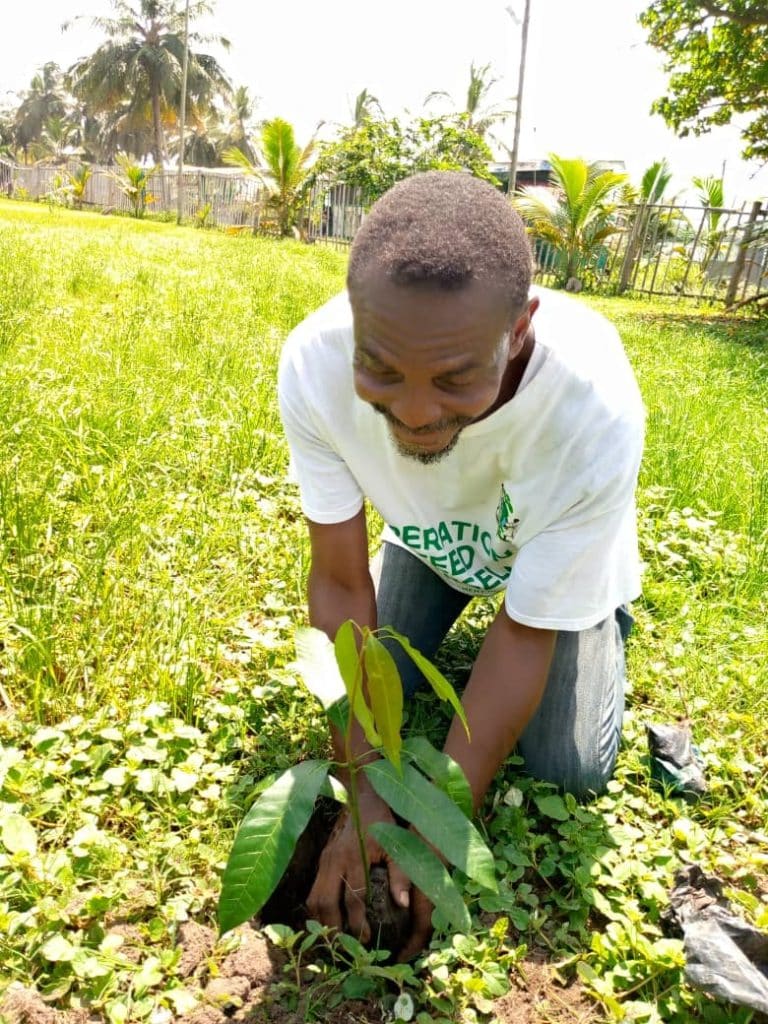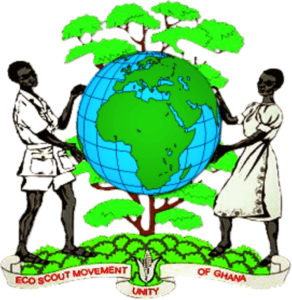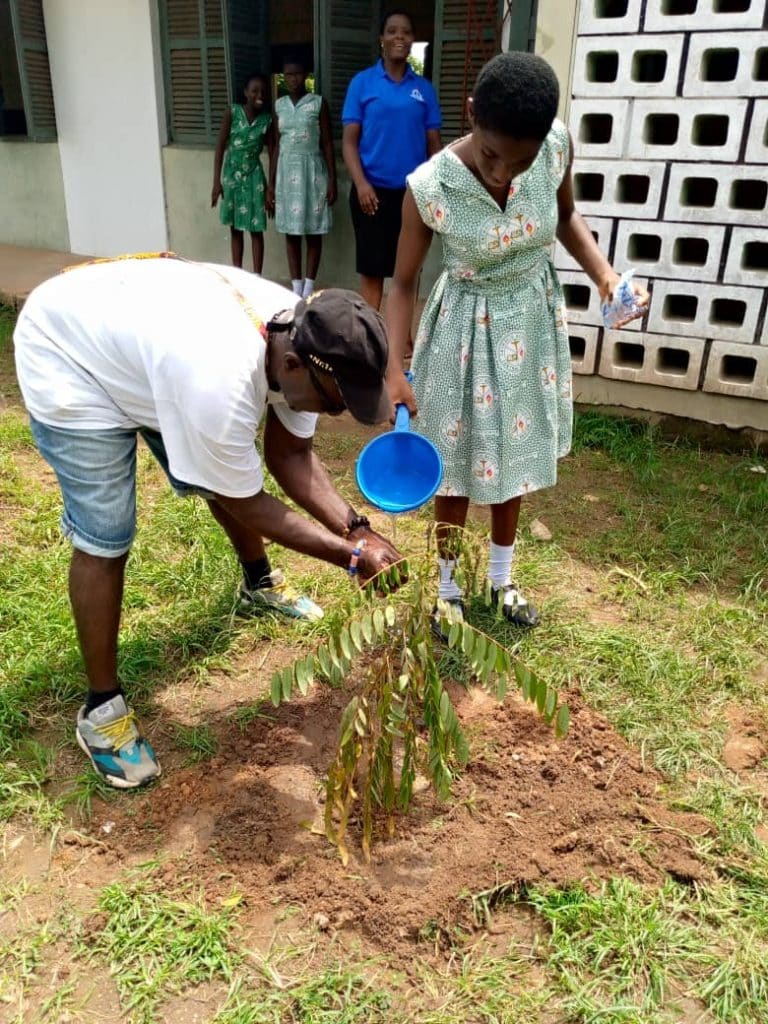Thank you for reading this post, don't forget to subscribe!
Trees are essential to the health of our planet, and planting one is a gift that keeps on giving, Discover why planting a tree is one of the best things you can do for nature
The Importance of Trees for the Planet
They are vital for maintaining a healthy planet and are responsible for producing the oxygen we need to survive. Through photosynthesis, trees absorb carbon dioxide, and greenhouse gas, and release oxygen into the atmosphere. This process helps regulate the Earth’s climate and reduces the impact of global warming. Additionally, trees act as natural filters, removing pollutants from the air and improving air quality. The presence of trees in urban areas can also help reduce noise pollution and provide shade, creating a more pleasant and livable environment.
But the importance of trees goes beyond their role in the carbon cycle and air purification. They help maintain the fertility of the land, enabling agriculture and supporting a wide variety of plant and animal life. Furthermore, trees provide valuable resources such as timber, fruits, nuts, and medicinal plants, which are essential for human survival and economic development.
Benefits of Planting Trees
The benefits of planting trees are far-reaching and impact both the environment and society as a whole. One of the most obvious benefits is trees’ aesthetic appeal to our surroundings. They add beauty and tranquillity to urban areas, making them more inviting and pleasant.
Trees also provide shade, reducing the need for energy-intensive air conditioning in the summer months. This helps lower energy costs and reduces greenhouse gas emissions associated with electricity generation.
Beyond their visual and cooling benefits, trees offer numerous health benefits. Research has shown that spending time in nature, surrounded by trees, positively impacts mental health, reducing stress and anxiety. Trees also help improve air quality by absorbing pollutants and releasing clean oxygen. This can lead to a decrease in respiratory illnesses and other health issues related to poor air quality.
Environmental Impact of Planting Trees
The benefits are significant when it comes to the environmental impact of planting trees. As mentioned earlier, trees play a crucial role in mitigating climate change. They absorb carbon dioxide, a greenhouse gas that contributes to global warming, and store it in their biomass. This helps reduce the concentration of carbon dioxide in the atmosphere, thus slowing down the rate of climate change. One mature tree can absorb up to 48 pounds of carbon dioxide per year.
Furthermore, trees act as natural air filters, trapping particulate matter and pollutants that are harmful to human health. They help reduce ozone, nitrogen dioxide, and sulfur dioxide levels in the air, improving air quality and reducing the risk of respiratory diseases. By planting trees, we can create healthier and more Sustainable communities.
The Role of Trees in Mitigating Climate Change
Climate change is one of the most pressing challenges of our time, and trees have a crucial role to play in mitigating its effects. Trees absorb carbon dioxide from the atmosphere through photosynthesis and store it in their trunks, branches, and roots. This carbon sequestration helps reduce the concentration of greenhouse gases, thus slowing down the rate of global warming.
In addition to carbon sequestration, trees also help regulate local temperatures through the process of evapotranspiration. As trees release water vapor into the air, they cool their surroundings, creating a more suitable microclimate for human habitation. This can be particularly beneficial in urban areas, where the heat island effect can lead to higher temperatures and increased energy consumption.
Moreover, forests act as natural buffers against extreme weather events such as floods and hurricanes. The roots of trees help stabilize the soil, preventing erosion and reducing the risk of landslides. They also absorb and store water, reducing the likelihood of flash floods during heavy rains. By planting trees, we can strengthen the resilience of our communities and protect them from the impacts of Climate Change.
How Planting Trees Supports Biodiversity
Biodiversity refers to the variety of plant and animal life in a particular habitat or ecosystem. It is essential for the health and functioning of ecosystems and plays a crucial role in maintaining the balance of nature. Unfortunately, human activities such as deforestation and habitat destruction have led to significant biodiversity loss worldwide. Planting trees can help reverse this trend and support the recovery of ecosystems.
Trees provide habitat and food for a wide range of species, from insects and birds to mammals and reptiles. Forests are home to more than 80% of terrestrial biodiversity, making them one of the most biodiverse ecosystems on Earth. By planting trees, we can create new habitats and corridors for wildlife, allowing them to thrive and ensuring their survival for future generations.
It’s not just forests that support biodiversity; even a single tree in your backyard can make a difference. Native trees, in particular, are important as they provide food and shelter for local wildlife. By choosing native tree species and creating wildlife-friendly gardens, we can attract a variety of birds, butterflies, and other beneficial insects to our neighborhoods.
Steps to Plant a Tree Effectively
Planting a tree may seem like a simple task, but it requires careful planning and execution to ensure its survival and long-term growth. Here are some steps to follow for effective tree planting:
1. Choose the Right Location: Consider the soil type, sunlight exposure, and available space before planting a tree.
2. . Dig a hole that is wide and deep enough to accommodate the tree’s roots, ensuring that the root collar (the point where the trunk meets the roots) is level with or slightly above the soil surface.
3. Backfill the hole with soil, firming it gently around the roots to eliminate air pockets. Avoid burying the root collar too deep as it can lead to rot and other problems.
4. Water and Mulch: After planting, water the tree thoroughly to help settle the soil and ensure good root-to-soil contact. Apply a layer of organic mulch around the base of the tree, making sure to keep it away from the trunk. Mulch helps retain moisture, suppress weeds, and regulate soil temperature.
5. Provide Care and Maintenance: Regularly water the tree, especially during dry spells, to help it establish a strong root system. Prune any damaged or diseased branches and monitor the tree for signs of pests or diseases. Fertilize as necessary, following the recommendations for the specific tree species.
Choosing the Right Tree for Your Location
When it comes to choosing a tree to plant, it’s important to consider the specific conditions of your location. Different tree species have different requirements in terms of sunlight, soil type, and moisture levels. They are more likely to thrive and require less maintenance compared to non-native species. Native trees also support local wildlife and help preserve biodiversity.
Consider the mature size of the tree when selecting a species. Ensure that it has enough space to grow without interfering with power lines, buildings, or other structures. Also, consider the purpose of the tree – whether you want it for shade, privacy, or aesthetic reasons – and choose a species that fulfills your requirements.
If you’re unsure about which tree species to choose, consult with a local arborist or horticulturist who can provide expert advice based on your specific location and needs.
Tree Planting Initiatives and Organizations
Tree-planting initiatives and organizations play a crucial role in facilitating tree-planting efforts. They provide resources, support, and guidance to individuals and communities interested in planting trees. Here are a few notable organizations:
1. Forestry Commission of Ghana: The Forestry Commission works to restore and enhance Ghanaian lands. They engage in tree planting, reforestation projects, and conservation and restoration initiatives.
2. Trees for the Future: Trees for the Future is an organization that focuses on reforestation projects in Africa, Asia, and Latin America. They work with local communities to plant trees and improve livelihoods through sustainable land management practices.
3. One Tree Planted: One Tree Planted is a non-profit organization that partners with reforestation projects around the world.

Ways to Get Involved in Tree Planting Efforts
Here are a few suggestions:
1. Tree Planting Events: Many communities organize tree planting events, especially during specific seasons like Green Ghana Day or Earth Day. Get involved by volunteering your time and helping plant trees in parks, schools, or other public spaces.
2. Donate to Tree Planting Organizations: Support tree planting organizations by donating. Your contribution can help fund tree planting projects and support the ongoing maintenance and care of trees.
3. Advocate for Tree Planting: Raise awareness about the importance of tree planting and advocate for policies and initiatives that promote tree planting and conservation.
4. Plant Trees in Your Backyard: If you have space in your backyard, consider planting a tree or creating a small garden with native trees. Not only will it beautify your surroundings, but it will also provide a habitat for wildlife and contribute to a healthier ecosystem.
Remember, every tree planted makes a difference, no matter how small.
Conclusion: The Power of Planting Trees for a Sustainable Future
Planting a tree is a simple yet powerful act that has far-reaching benefits for the planet. Not only does it beautify our surroundings and create a more pleasant environment, but it also plays a crucial role in combating climate change, improving air quality, and supporting biodiversity. Every tree planted is a step towards a greener, healthier future.
By planting trees, we can contribute to carbon sequestration, reduce the impacts of climate change, and create more sustainable communities. Trees provide numerous benefits, from cooling and shading urban areas to filtering pollutants and improving air quality. They offer habitat and food for a wide range of species, helping to preserve biodiversity. Additionally, trees provide valuable resources, support local economies, and enhance our overall well-being.
Whether it’s planting a small sapling in your backyard or participating in large-scale reforestation efforts, every tree planted makes a difference. So why not consider giving the gift of a tree? Not only will you be making a lasting impact on the planet, but you’ll also inspire others to do the same. Join the movement and help create a world where trees thrive and our planet flourishes. Together, we can build a more sustainable future for ourselves and future generations.
Read More on How to Plant Organic Vegetable Seeds and Seedlings


